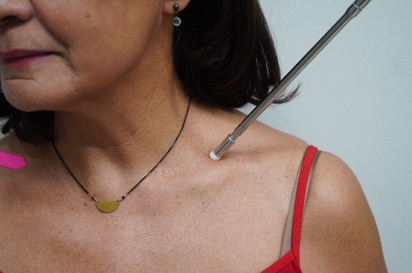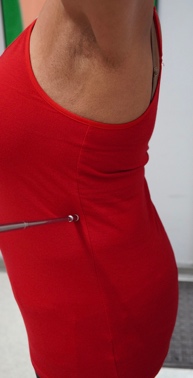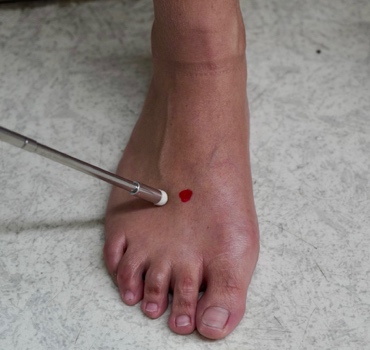The discussion below comes from the ISC (International Sports Corp.) and is the primary work of L. Knight PhD, R. Kazoroski MS, and Professor A. Cohen, who was my entrance to it. Sadly they have all passed


Lest you think that none of this was known in the west pre-Bruce Lee
Martial artists from all over the world have been using “pressure points” as far back as anyone can remember. The purpose of these were numerous including distractions, immobilizing, submission, and possibly death. Modern law enforcement became interested in in using these to assist in the arrest and control of resistant individuals. They needed to use concepts and techniques that did not employ excessive force, or the possibility of exposing themselves to litigation. These controls are essentially pain compliance techniques based on acupuncture points and western medicine.
Many martial artists, and even non- martial artists have an interest in Kyusho (Keupso, Dim- Mak). These however, take a long time to study, and are not immediately useful to the population at large.
Because of these techniques intended purpose, they have a number of positive virtues that make them a valuable addition to your practice.
- They are easy to use and easy to remember. You can literally learn them in a few hours, and use them in effective self-defense that night.
- If practiced correctly, they will not cause injury.
- They can be trained, and practiced safely in a Dojang environment with all adult belt levels. As stated, they do not demand years of practice and expert technique.
Important! What they are not!
- They are not 100% They are not for life threatening situations.
- They are for control. Your drunk uncle at the family picnic might need a little persuasion, but he doesn’t need your round kick to his head.
- They need to be practiced correctly. Doing them incorrectly can cause permanent injury.
- Lastly, they are not a toy to be used on friends, moms, wives, or others.
So, my intention in this discussion is to illustrate what are in my opinion, some of the more useful of these techniques. I will divide them between upper and lower body so that it will easier to learn and practice.
The controls are divided between “touch” and “strike” techniques.
With touch controls, they do not involve any strikes or blows. Tools used are extended knuckles, thumb supported by fist with tip pressure, fingers and finger tips.
Strikes are done utilizing fingers, fist, palm heel, knee, elbow, foot, shin, or even impact weapons. Note: there are no strikes to head, any joint, and no edge of hand (knife hand) of any kind.
Lastly, when practicing with a partner we will never use more than 2% of our natural strength! If you can get a result at that level you know it works.
Note: Many of the original point locations used Traditional Chinese Medicine nomenclature, i.e. Acupuncture points, I have left them out as they are not needed, and are unfamiliar to the general audience.
The Upper Body Points:
- Posterior Medial Shoulder Mantle (PMSM)—One third of the way between the base of the neck and edge of the shoulder. It is often a “trigger point” due to the habit of shrugging the shoulders (get rid of your phones and screens!) While it can be a touch point, most of the time it is used with a hammer fist blow on the shoulder from behind.


- Lateral Cervical (LC)-Mid line of side of neck, just behind SCM muscle. Pressure with an extended knuckle (touch control) causes a great deal of pain. Can be used to move someone who is resisting.

- Infra Clavicular (IC)- Below the collar bone 1/3 of the way from the shoulder to sternum, just above the pectoralis muscle. The is a strike point and is done in and down.

- Supra Clavicular (SC)- Located in the hollow near the neck just above the collar bone. Touch pressure downward with fingers is very painful. It is sometimes used from behind to get an individual to “back away” or get them to sit down.

- Axilla (A)—Touch pressure directly into the armpit. This is very sensitive as there is no muscular covering over the nerves there.

- Lateral Thoracic (LTC)—On the side of the body midline, halfway between the armpit and waist. Heavy touch with a rubbing action, or even a strike with a forearm or elbow.

- Dorsum Forearm (DF)—Lateral dorsal (outer) side of the arm about 2” lower that the elbow crease over the radial nerve. Can be touch or strike control. Most common is to strike down on the point.

- Posterior Border of Ramus (PBR)—Side of the face just below where ear lobe connects to face. Touch control by applying pressure directly in and slightly forward.

Note: this is not behind the jaw line, that can cause permanent damage!
- Infralabial Sulcus (IS)—the hollow below the lower lip and above the chin. Touch control is used to press in and down to release the jaw.

The Lower Body Points:
- Lateral Thigh (LT)—Two thirds of the way down the outside of the leg, just behind the Ilio-tibial band. This is a very commonly used strike point. You can use knees, kicks, or stick (baton). A favorite of bouncers (doormen) everywhere. A hard strike here will cause immediate dysfunction of the leg.

- Medial Thigh (MT)—Just forward of the midline of the inner thigh, halfway between the groin and knee.
Most commonly a strike point, but sometimes a “hard touch” point, especially in a close in grappling situation.

- Posterior Leg (PL)—Back of the calf muscle on its upper aspect. It is a strike point. The hit is inward and down. This will usually collapse the knee forward.

- Anterior Leg (AL)—Strike point located midway between the knee and foot. Extremely painful as there is nothing covering the Tibia (shin bone).

- Dorsum Foot (DMF)—Strike control top of foot midway between ankle and toes. This while called a strike control should not imply a hard striking action. A hard stomp down with hard shoes/ boots can cause major injury to the bones of the foot. This is better interpreted as a “grinding” action of your heel.

He can be reached at [email protected]
